
Contact

Home
Hoaxes & Pranks: Monster Hunters
EXCITING SHARK HUNT
MAN-EATER CAPTURED AT JAMAICA
Recorder (Port Pirie, SA)
Date: June 30, 1922
Page Number: 1
A young woman, who was bathing in the Jamaica harbor, was attacked by a shark, which bit her leg off at the thigh, and she died as the result of her injuries. Plans were immediately drawn up for the capture of the shark. The same night the water about the pier was baited with huge pieces of beef and a dog. Later the shark came back and made for the dog, which was floating close to the pier.
As the shark opened his mouth, to devour the dog a man fired at it, but the cartridge failed to explode. Those that saw the shark at this time estimated its length to be about 14ft.
On the following day the well-known English deep-water fisherman, Mr. Mitchell-Hedges, arrived and tried to rid the harbor of the monster, but so great was the interest that the work of Mr. Hedges was considerably interfered with by the crowd. Getting to work, he laid his trap for the shark—five big buoys that floated around a certain area. Seventy-five yards of manila rope attached to steel chains with huge hooks, and baited with 5lb fishes and two dead dogs connected them up.
Mr. Hedges' idea was that if the monster took one or other of the baits he would drag the drums along and, thus impeded, would spend out his strength until eventually he would be landed. Soon after the trap had been laid, it was observed that one of the drums was shaking, and on inspection it was seen that the shark had taken the bait within a few yards of the spot where the young woman had been attacked.
There was a little excitement, and Mr. Mitchell-Hedges was telephoned for. When Mr. Hedges arrived at the little pier the shark gave a convulsive snap of the jaw, and buckled the great steel hook—showing what a tremendous pressure must have been brought to bear on it. Mr. Hedges seized the tail of the shark, and ropes were got around it, and about ten men dragged it ashore.
On arrival the shark was hoisted out of the boat by a crane and placed on a truck, and hauled under the shed of the Harbor Master's storeroom. Mr. Mitchell-Hedges then got to work and performed the autopsy. He opened the stomach and took out everything, but beyond three good sized young sharks there was not a vestige of food or any foreign substance whatever and not even the bait — a 5lb yellow-tail—was to be found. The shark measured 9ft 6in., and weighed approximately 700lb. It had a girth of 8ft 6in. and the mouth measured 2ft 6in. It is the custom of the shark to expel the contents of its stomach on being trapped. In fact, the authorities say that it can empty its stomach automatically, at any time. Thus, Mr.Hedges was not surprised to find the stomach empty, and that the 5lb schnapper had also been thrown out.
F. A. Mitchell-Hedges part 2



An Ocean Terror.
Northern Standard (Darwin, NT)
Date: February 2, 1923
Page Number: 4
The whip-ray is one of the most deadly fish in the ocean. The "whip" of a whip-ray's tail is like a poisoned dagger, and should not be touched with the naked hand. It is a fearsome object about 9in. long. There are small teeth, or barbs, along the whole length of it, which ends in a point of needle-like sharpness. One blow from the "whip" brings an agonizing death in three minutes. Mr. F. A. Mitchell Hedges, the explorer, tells of the remarkable vitality of these monsters of the Pacific :
"One we caught was shot four times through the head with a Colt revolver, struck about twenty times with a hunter's knife, and towed ashore. There he was whacked across the head with heavy pieces of timber, and his whip was cut off after the trunk of a tree had been placed across his tail. Finally, a thick slice was out from his side, and still he showed signs of life by biting pieces of wood with snips of his jaws."


Stingrays are a group of rays, which are cartilaginous fishes related to sharks.
In former Spanish colonies, a stingray is calledraya látigo ("whip ray").
Stingrays do not aggressively attack humans, though stings do normally occur if a ray is accidentally
stepped on. Contact with the stinger causes local trauma (from the cut itself), pain, swelling, muscle cramps from the venom, and
later may result in infection from bacteria or fungus. The injury is very painful, but seldom life-threatening unless the stinger
pierces a vital area.


A stingray's stinger
Television personality and environmentalist Steve Irwin has died from a stingray wound while filming
off north Queensland.
"He came over the top of a stingray and the stingray's barb went up and went into his chest and put a hole
into his heart," Mr Stainton said.
SAWFISH WEIGHING 2¼ TONS.
The Register (Adelaide, SA)
Date: March 10, 1923
Page Number: 5
Mr. Frank Mitcheil-Hedges, the explorer and deep-sea fisherman, whose investigation of the marine fauna of Panama Bay has attracted much attention, has caught a saw-fish off Taboguilla Point of unusual size and scientific interest. The fish towed his small fishing boat for 400 yards, directly towards Mr. Mitchell-Hedge's yacht Cara, passing so close that it was possible to cast a line from the yacht to the boat, and eventual, to take up the strain on the capstan in the stern of the yacht. The catch then swung the yacht round, dragged it off, anchor and all, and towed it about the bay for three hours. During this, time it was impossible for any one to guide or play the fish, but when it was exhausted Mr. Mitchell-Hedges, Dr. H. L. Casey, and four men hauled it close enough for Dr. Casey to fire four explosive bullets into its carcase. At the island three fishing boats were required, all pulling together, to tow the fish from the Cara's anchorage. The greatest difficulty was experienced in beaching it, and this was accomplished only by floating it in on the tide. It measured 29 feet in length, and 19 feet in girth, and weighed approximately 2¼ tons. Mr. Mitchell-Hedges and Dr. Casey dissected their catch, and removed 36 young. These saw-fish proved that the number of teeth on the saw bear no relation to the age of the fish, since each had 13 teeth on one side and 19 on the other, the exact number found in adult fish. The young sawfish were taken to Santo Tomas Hospital. One specimen was presented to the hospital museum, and the remainder will be preserved for Mr. Mitchell- Hedges.

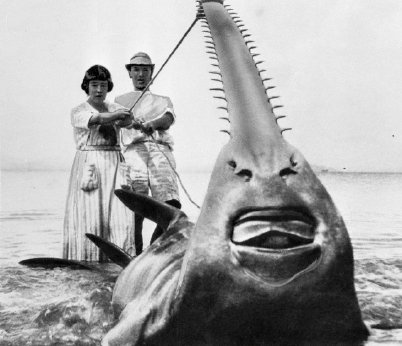
Entirely as a function of its dangerous-looking forward protrusion, the inoffensive sawfish has acquired a totally undeserved reputation
for ferocity. In Mr. Mitchell Hedge’s silly book, the weight and size of virtually every fish he claims to have caught is far beyond
the known range for these species, but his stories of gigantic, thrashing sawfish are the wildest of all.
SOURCE
"SOME" FISH
Kalgoorlie Miner (WA)
Date: May 10, 1923
Page Number: 3
(From Our Special Representative).
London, March 29.
Mr. F. A. Mitchell Hedgess has just returned to England after two years' voyage of exploration in Central America, and has brought back some thrilling stories of adventure. Mr. Hedges' companion throughout the cruise was Lady Richmond Brown, and together they claim to have set up several world's records for deep sea fishing, and have penetrated into the territory of the Chacunaque Indians, from which, it is said, no white person has before escaped alive. They did most of their exploring in a 20-ton. motor launch, Kara. They caught a monster saw fish, weighing 5700 lb. which was 31 feet long and 21 feet in circumference. It put up a terrible fight and towed their boat for five hours. Another of their exploits was the exploration of the islands occupied by the San Blas Indians, after cruising 11,000 miles in the Caribbean Sea on deep sea research work. Amongst the relics that Mr. Hedges brought back are one hundred native gods and mummies, nine hundred necklaces made from the teeth of extinct animals, bundles of bows and arrows, spears, war clubs, and other weapons, and eight hundred pieces of picture writing on cloth. "Our visit to the territory of the Chacunaque Indians was a life and death stunt," said Mr. Hedges to a correspondent. "We left our boat and travelled 20 miles inland through dense undergrowth. The Indians had never seen white people before, and they looked upon us as gods. Amongst these Indians the women are the dominant sex. They direct the labour of the men. They are all dwarfs, the average height being about 4 ft. 3 in. Life among them is entirely primitive. They know nothing about stone or metal. Disease is killing them off in hundreds."

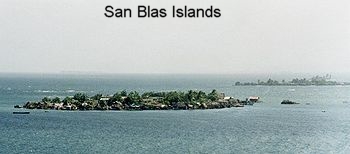

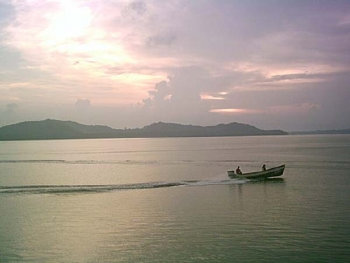
Chucunaque River, Panama
TRAVEL IN PANAMA
Socialistic Savages.
The Advertiser (Adelaide, SA)
Date: May 26, 1923
Page Number: 21
By the steamship Kinderdyk, a Dutch fruit boat, there arrived at Southampton on April [?] Mr. F. A. Mitchell Hedges, who has spent two years on a scientific and exploring expedition in Central America, with a large collection of specimens that he had got together. Hauled up on deck was a motor boat, named the Kara, which was used for researches into fish life made in the Caribbean sea and the Pacific, and partly for journeys up rivers. Her crew consisted of three only.
In travel, Mr Mitchell Hedges told a representative of the London "Daily Telegraph," nothing was more interesting than the penetration he was able to make into the Chucunaque River country, in the Panama hinterland. It lay beyond the San Blas Indian territory, about 300 miles from Colon. White men had never been seen there. Nature and climate made access difficult, and as the natives had the idea that their gods were offended if any stranger entered the land, some previousattempts had ended in tragedy. The native Indian there was a diminutive, unpreposessing person, broad-shouldered, with a large head, and, being bow-legged, the average height was only some 4 ft. 3 in. They had a dialect of very few words, which was found to be allied to the tongue spoken by the Sun Bias Indians, with whom some exchange and barter was carried on by boat down the river. Their territory was entirely isolated, and they had no knowledge of Panama.
Inland the Indians built grave houses, thatched structures, which might be as large as 200 ft. by 150 ft., to which they consigned their dead. The corpses were laid in the ground in hammocks, and a vine stem was inserted, with the idea that as the vine grew the dead man's spirit would ascend with it. Hard wood stools and the eating utensils they had used in life were paced near, and they believed that all the spirits assembled in the grave house and conversed in the night hours. Different tribes had their own separate gods. One of the beliefs among the river tribes was that when an Indian died a canoe appeared on the river, in which the man's spirit embarked and was floated upstream to where the river divided into into many streams. A water spirit there pointed to the branch up which the dead man's spirit should go, and after long journeyings the soul arrived at a land of plenty, where food and every other desire was found.
Communal Living.
The women seemed to be the superior sex, though not in attractions; they were distinguished by a nose-ring, which was worn from infancy. Life among the tribes was very simple. As many as thiry families with all their children lived together in one reed house. There was a crude marriage rite. There was no four-legged animal in the country that was domesticated, and scarcely any flesh was eaten, the chief foods being plantain, which was picked unripe and cooked, and "mamee," a species of corn of distinctive characteristics, and fish from the river. Pineapples and areado pears were abundant. It was usual to see food being boiled in one common pot for use of the common household. The weapons of the Indians were blowpipes and bows with arrows, which had triplicated barbs, these being steeped in an alkaline poison. The country must number some few hundred square miles.
Mr. Mitchell Hedges said that a pretty thorough exploration was made of the San Bias Indian territory, every village accessible being visited. The Indians avoided all inter-marriage, kept their breed pure. Their country unfortunately reeked with smallpox and Dobie's itch, and the people suffered from the ravages of a horrible, tick, which got into their eyes and ate them out. The tribes lived on a socialistic basis, the Indians all giving a hand to build the houses, a task in which even a chief worked as any other, and supplying food to the common stock. They had no money and no metal weapons. Their religion was worship of wooden gods, which existed in great variety. He had a collection of a hundred of them. Life was so exceedingly primitive that there appeared to be no immorality among them and no deceit.
An explorationwas also made of the Maltcays Islands, which were uncharted. No living being was seen on them, not a human soul, but the cocoanut grew plentifully. The islands, all small, extended over a length of twenty to thirty miles, the largest having an area of perhaps five square miles. They were only reached by intricate navigation through coral reefs. Turtles were plentiful.
Among the ethnographic specimens that he had brought back Mr. Mitchell Hedges attributed importance to some 800 pieces of picture writing on cloth, many being ablaze with color. The influence of the ancient Aztec civilisation of Central America was marked in these, but some pieces very curiously gave reminder of symbols more generally associated with Egypt and Babylonia. He had secured thirty necklaces, which comprised the complete outfit of a witch doctor, and were reputed to be very old. The collections made also included many funeral pots from the San Bias and the Chucanaque territory, bows and arrows and war clubs.
Sea Explanation.
Much of the time during his two years' absence, said Mr. Mitchell Hedges, had been spent in research into the life of the larger sea fishes and their diseases. On land the larger reptiles and amphibian monsters of remote geological ages have disappeared, and they were found only as fossils in the old strata, but in the sea many great fish—sharks, rays, saw fish, and the like—remained which were closely allied to the fossil fishes, and seemed not to have greatly changed. The sea still yielded the more primitive forms of life, and as one great object of medical science today was to search for the origins of disease and of malignant growths, it seemed a field of great promise to make the search in the simplified organisms of primitive life rather than in so complex an organism as that of human beings. It seemed that disease had itself evolved as life had evolved.
For a time, said Mr. Mitchell Hedges, be was joined by Dr. H. L. Casey, a recognised authority from Texas, who came to establish the presence of certain diseases in fish, and the Santo Tomas Hospital in Panama also lent valuable assistance. They were able to determine that of the sand shark of the Pacific waters abont 6 percent suffered from tuberculosis. The worm trechine,common in pigs, also occurs in several forms of fish, as do malignant tumors. Pathological examination in the Santo Tomas Hospital showed definite effects of a calcinareous spinal growth in the shark, and he had brought home vertebrae with the growth seen attached. This produced a rigidity in the spinal column, causing partial paralysis, and it might be not unreasonable to theorise that by destruction of nerve centres a species of insanity might overtake the shark. Cancerous growth were also found in fish.
Mr Mitchell Hedges mentioned as an entirely unexpected find that of a shark taken in the Caribbean Sea, which, instead of having the customary shark hide, was covered, starting about 1 ft. from the tail, by a substance which might almost be called fur, of from ½in. to 1 in. in length. Was this, he asked, the missing link between the fish and the mammal?





Areado Pears ???
Plantain
Pineapple



Tinea cruris, also known as Dhobie itch
Maltcays Islands ???
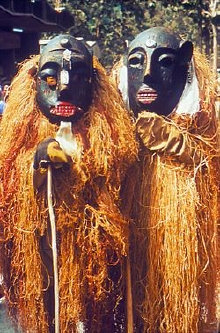

A witch doctor was originally a type of healer who treated ailments believed to be caused by witchcraft. It is currently used to refer to healers, particularly in third world regions, who use traditional healing rather than contemporary medicine.
In its original meaning, witch doctors were emphatically not witches themselves, but rather people who had remedies to protect others against witchcraft.

Dr. H.L. Casey, the popular veterinarian who told of his wide military experience in the states and foreign countries SOURCE
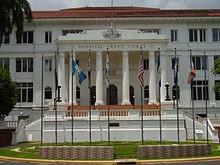

Furry shark ???
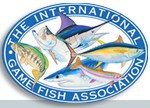
Sawfish, large-tooth (Pristis perotteti)
All-Tackle Records: 403.92 kg (890 lb 8 oz)
Fort Amador, Canal Zone, Panama
26-May-1960 Jack Wagner
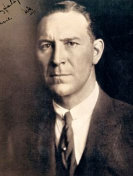
CONTENTS





























